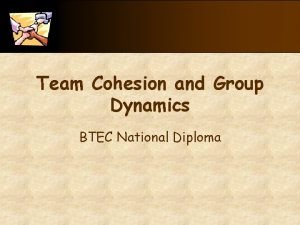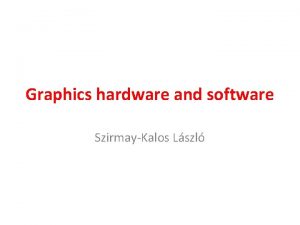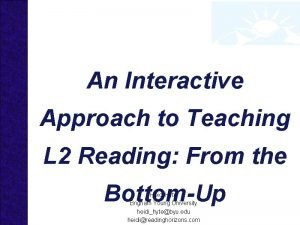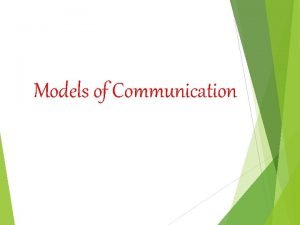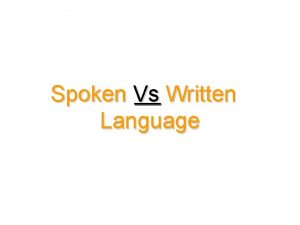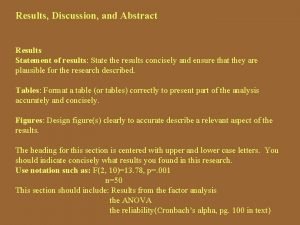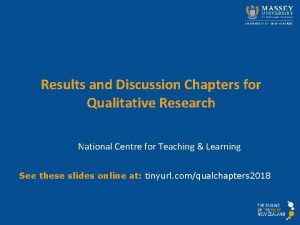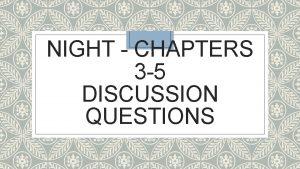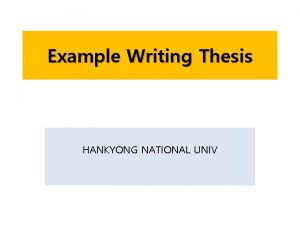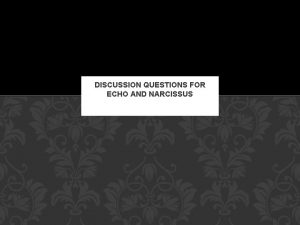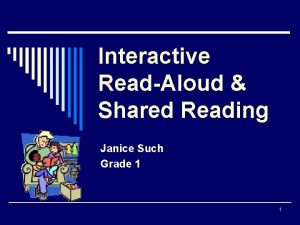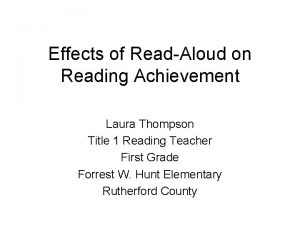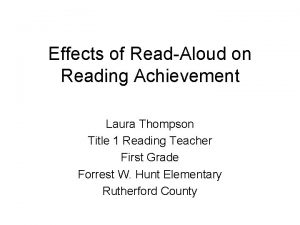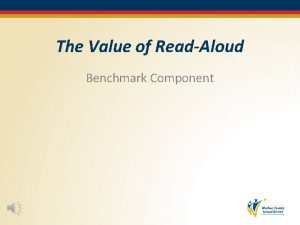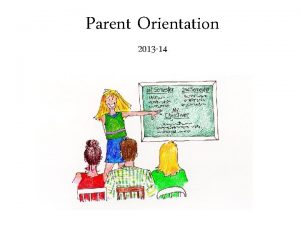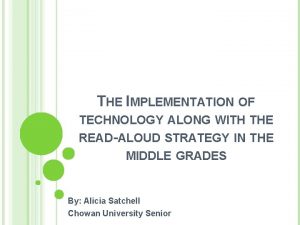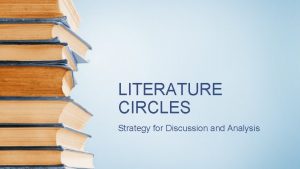EFFECTS OF INTERACTIVE READALOUD AND LITERATURE DISCUSSION ON































- Slides: 31

EFFECTS OF INTERACTIVE READ-ALOUD AND LITERATURE DISCUSSION ON READING COMPREHENSION FOR FIRST-GRADE STUDENTS WITH LANGUAGE IMPAIRMENTS IN A TITLE 1 SCHOOL Dr. Elizabeth Vultaggio Salah Dr. David Brian Ross July 13, 2015 Nova Southeastern University Summer Conference

Problem Statement The problem for this applied dissertation is that 26% (4 out of 15) of first-grade students with language impairments are performing below grade level standards on the Fountas and Pinnell (2012) Benchmark System 1: Oral Language Assessment (OLA) and Comprehension Conversation. Language impaired students performed below grade level on these diagnostic assessments as well as demonstrated a weakness in decoding, vocabulary skills, language skills, fluency, oral retell, and reading comprehension. Low level of performance negatively impacted general understanding and learning outcomes of these language impaired students.

How did you determine that your review of the literature was comprehensive to determine mastery of the topic?

Chapter 2: Literature Review • • Introduction Theoretical Framework Reading Performance in a Title 1 School Student With Special Education Needs Interactive Read-Aloud Five Components of Reading Fountas and Pinnell Benchmark System 1 Research Questions • Effects of Interactive Read-Aloud and Literature Discussion on Reading Comprehension for First-Grade Students With Language Impairments in a Title 1 School

Theoretical Framework Vygotskian Theory: students are provided intellectual interaction through scaffolding approach that enhances learning more quickly than they could without the intervention. This intervention, defined as best practices in education today, guides learning through modeling and cognitive development, while building repertoire of knowledge and understanding in students. Effects of Interactive Read-Aloud and Literature Discussion on Reading Comprehension for First. Grade Students With Language Impairments in a Title 1 School

Reading Performance in a Title 1 School • According to the U. S. Department of Education (2004), the purpose of Title 1 funding, “is to ensure that all children have a fair, equal, and significant opportunity to obtain a high quality education and reach, at minimum, proficiency on challenging state academic achievement standards and state academic assessments” (p. 1). • Schools with large concentrations of low income students receive supplemental funds to assist in meeting educational goals to improve curriculum, instructional activities, counseling, parental involvement, increase staff, and program improvement. • For schools to qualify for Title 1 funding, a minimum of 40% of students must enroll in the free and reduced lunch program. Schools must spend funds on programs that benefit low income students who are failing, or are at-risk of failing, grade level requirements. • Effects of Interactive Read-Aloud and Literature Discussion on Reading Comprehension for First-Grade Students With Language Impairments in a Title 1 School

Student With Special Education Needs • Students with special education needs (e. g. , language impairments) require instruction to be modified in order to meet their diverse learning needs. • Students with learning disabilities might be slower to develop and use cognitive strategies compared to general education students. • Effects of Interactive Read-Aloud and Literature Discussion on Reading Comprehension for First-Grade Students With Language Impairments in a Title 1 School

Language Impaired Students • Four Major Areas Speech and Language Impairments Occur: articulation, voice, fluency, and language • Breakdown in communication as characterized are problems with receptive and expressive language processing • Deficits in comprehension, production, and use of language • Effects of Interactive Read-Aloud and Literature Discussion on Reading Comprehension for First. Grade Students With Language Impairments in a Title 1 School

Interactive Read-Aloud • Modeling and scaffolding comprehension strategies • Builds understanding around open-ended responses • Builds on strengths, extends background knowledge, and fosters critical thinking • Instruction builds comprehension, fluency, vocabulary, and language skills • Effects of Interactive Read-Aloud and Literature Discussion on Reading Comprehension for First-Grade Students With Language Impairments in a Title 1 School

Five Components of Reading • • • Phonemic Awareness Phonics Vocabulary Comprehension Fluency Oral Reading (recently added) • Effects of Interactive Read-Aloud and Literature Discussion on Reading Comprehension for First-Grade Students With Language Impairments in a Title 1 School

Fountas and Pinnell Benchmark System 1 • Components: Phonics and Word Analysis and Running Reading Record • Utilized by school districts across the United States as well as the following countries: Canada, Australia, and New Zealand • Comprehensive assessment tool • Comprehensive understanding of a student’s linguistic knowledge • Administered one-on-one • Effects of Interactive Read-Aloud and Literature Discussion on Reading Comprehension for First-Grade Students With Language Impairments in a Title 1 School

Phonics and Word Analysis • • • Oral Language Assessment Early Literacy Behaviors Uppercase Letter Recognition Lowercase Letter Recognition Phonological Awareness (Blending and Segmenting) 25 High Frequency Words 50 High Frequency Words 100 High Frequency Words Phonograms List #1 Phonograms List #2 Phonograms List #3 Phonograms List #4

Running Reading Record • • Cold read Fiction or nonfiction text Independent and instructional reading levels Reading accuracy, self-corrections, comprehension, and fluency

Research Questions 1 • Will the use of modeling and explicit teaching of comprehension strategies during interactive readaloud improve reading comprehension for students with language impairments on Fountas and Pinnell Comprehension Conversation Assessment? 2 • Does active engagement in literature discussions increase performance on the Fountas and Pinnell Comprehension Conversation Assessment and Oral Language Assessment for students with language impairments? 3 • Will vocabulary interventions affect performance on the Oral Language Assessment for students with language impairments?

Methodology • Give a brief overview of your research methodology? How did you determine your research approach, (i. e. , quantitative, qualitative or mixed approach)?

Methodology This researcher analyzed data from four students’ Fountas and Pinnell Benchmark System 1 test booklets. The four participants were selected because of their exceptionality as identified on their Individual Education Plan. Data was collected analyzed from these four students based on their scores from kindergarten to the current school year (i. e. , 20132014). The researcher analyzed students’ data from the kindergarten school year 2012 -2013. Ongoing data collection continued during the school year of 20132014 while the students were enrolled in first-grade.

Participants and Sample Strategy The four participants were selected in order to gain an indepth understanding of the effects of the interactive readaloud coupled with literature discussions to improve comprehension of language impaired first-grade students. The participants made up a small sample size typical for purposeful sampling (Gall, Borg, & Gall, 1996, p. 217). “In purposeful sampling, the goal is to select cases that are likely to be ‘information-rich’ with respect to the purposes of the study” (Gall, Borg, & Gall, 1996, p. 213). Purposeful sampling made it feasible for the researcher to make hypothesis on the effects of interactive read-aloud coupled with literature discussion on students with language impairments and outlined the findings based on individual performance.

Instrument The Fountas and Pinnell Benchmark System 1 is a comprehensive assessment. This assessment was administered one-on-one, to determine independent and instructional reading levels. Educators report their results on recording forms. These forms reveal a wealth of information regarding students’ proficiencies in relation to reading accuracy and selfcorrections, comprehension, and fluency. Once a running reading record is administered, all reading elements (i. e. , accuracy, self-corrections, comprehension, fluency) are taken into consideration in determining an independent and instructional level, as well as, targeted teaching points.

Design This study was conducted as an embedded case study design using a quantitative method for data collection and analysis. The data was collected analyzed from two consecutive school years (i. e. , 2012 -2013, 2013 -2014). An embedded case study is described as a multiple case study design that will take an in-depth look treating each child as a separate case study. The main focus of this study was to determine where the students were before intervention, during intervention, and finally how they performed with interventions in place.

Design The A-B design is a two phase, basic signal-subject design. A in the A-B design was the individual student’s baseline data point; whereas B, was the data point after the intervention. The researcher observed and measured student data from the kindergarten school year (A); this data was taken from the 2012 -2013 school year. The researcher administered the read-aloud intervention, and observed and measured multiple data points after the intervention (B) during the 2013 -2014 school year.

Case Study One

Case Study Two

Case Study Three

Case Study Four

Table 3 Trimester Benchmark Reading Levels: Guideline for Aligning the Student Progression Plan With the Report Card Grade level Performance code 1 st trimester November 2 nd trimester February 3 rd trimester June Kindergarten PR Emergent –A B-C D-E Kindergarten AP Emergent A-B C Kindergarten ND Emergent A-with book introduction A-B First grade PR F-G G-H I-J First grade AP D-E E-F G-H First grade ND B-C and below D and below F and below Note. PR = Proficient; AP = Approaching; ND = Needs Development .

Time Management • Due to your successful completion of the dissertation, what are your thoughts on time management and balancing your personal and professional time during the dissertation process?

Professional Relations Between the Student and Chair • What were the key elements to building a successful professional relationship throughout the dissertation process? What were the challenges?

Dedication and Commitment Working Toward Completion of Your Doctoral Dissertation Final Report ARC 8968 Proposal ARC 8967 Concept Paper ARC 8966 Time Management

Doing Your Best Work To Complete a Great Dissertation • • Dedication Commitment Pride Scholarly Researcher-Author Future Publication Pro. Quest UMI 3665748

UMI Number: 3665748 All rights reserved INFORMATION TO ALL USERS The quality of this reproduction is dependent upon the quality of the copy submitted. In the unlikely event that the author did not send a complete manuscript and there are missing pages, these will be noted. Also, if material had to be removed, a note will indicate the deletion. Microform Edition © Pro. Quest LLC. All rights reserved. This work is protected against unauthorized copying under Title 17, United States Code Pro. Quest LLC. 789 East Eisenhower Parkway P. O. Box 1346 Ann Arbor, MI 48106 - 1346 UMI 3665748

QUESTIONS? DIALOGUE?
 Simple distillation conclusion
Simple distillation conclusion Transactional communication model
Transactional communication model Steiner's model of productivity
Steiner's model of productivity Interactive graphics software and hardware
Interactive graphics software and hardware The big 4 and the treaty of versailles interactive notebook
The big 4 and the treaty of versailles interactive notebook Renaissance and reformation interactive notebook
Renaissance and reformation interactive notebook Top down approach example
Top down approach example Managing personal communication
Managing personal communication Physical and chemical properties interactive
Physical and chemical properties interactive Pros of linear model of communication
Pros of linear model of communication Weather and climate interactive activities
Weather and climate interactive activities Spoken and written language examples
Spoken and written language examples What is interactive processing
What is interactive processing Interactive guide to healthy eating and active living
Interactive guide to healthy eating and active living Causes and effects of the french and indian war
Causes and effects of the french and indian war Differentiate between storied and non storied cambium
Differentiate between storied and non storied cambium Questioning and discussion techniques in the classroom
Questioning and discussion techniques in the classroom Tuesday with morrie questions
Tuesday with morrie questions The cask of amontillado by edgar allan poe questions
The cask of amontillado by edgar allan poe questions Results and discussion in research
Results and discussion in research Results and discussion in research example
Results and discussion in research example Night three never surrender discussion questions
Night three never surrender discussion questions What is macbeth’s response to macduff leaving?
What is macbeth’s response to macduff leaving? Example of results and discussion
Example of results and discussion Echo and narcissus questions and answers
Echo and narcissus questions and answers Results and discussion in research
Results and discussion in research Results and discussion vs conclusion
Results and discussion vs conclusion Danforth in the crucible
Danforth in the crucible What to write in results and discussion
What to write in results and discussion Discussion questions fahrenheit 451
Discussion questions fahrenheit 451 Documentary analysis
Documentary analysis Discussion questions about the glass castle
Discussion questions about the glass castle


